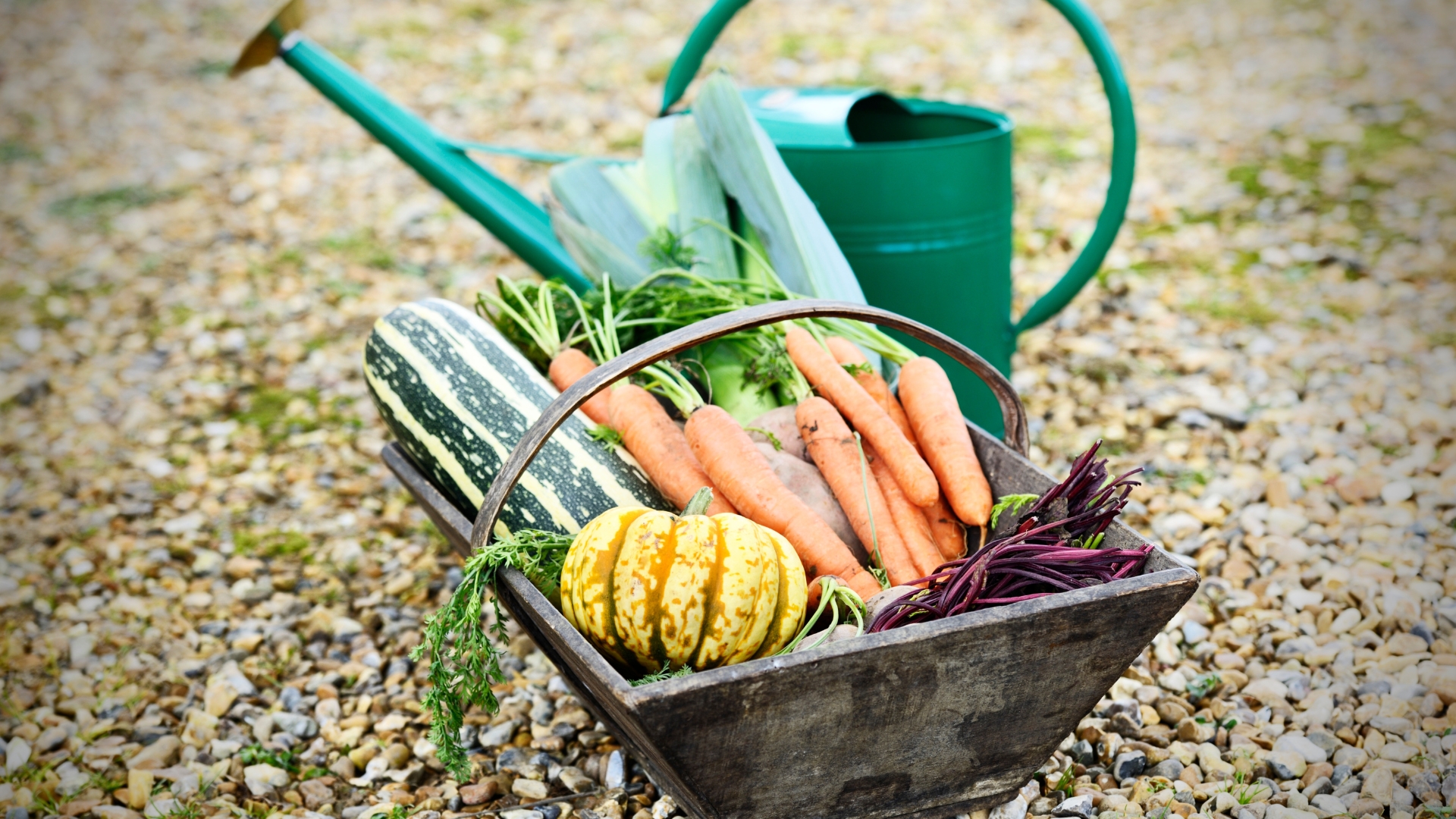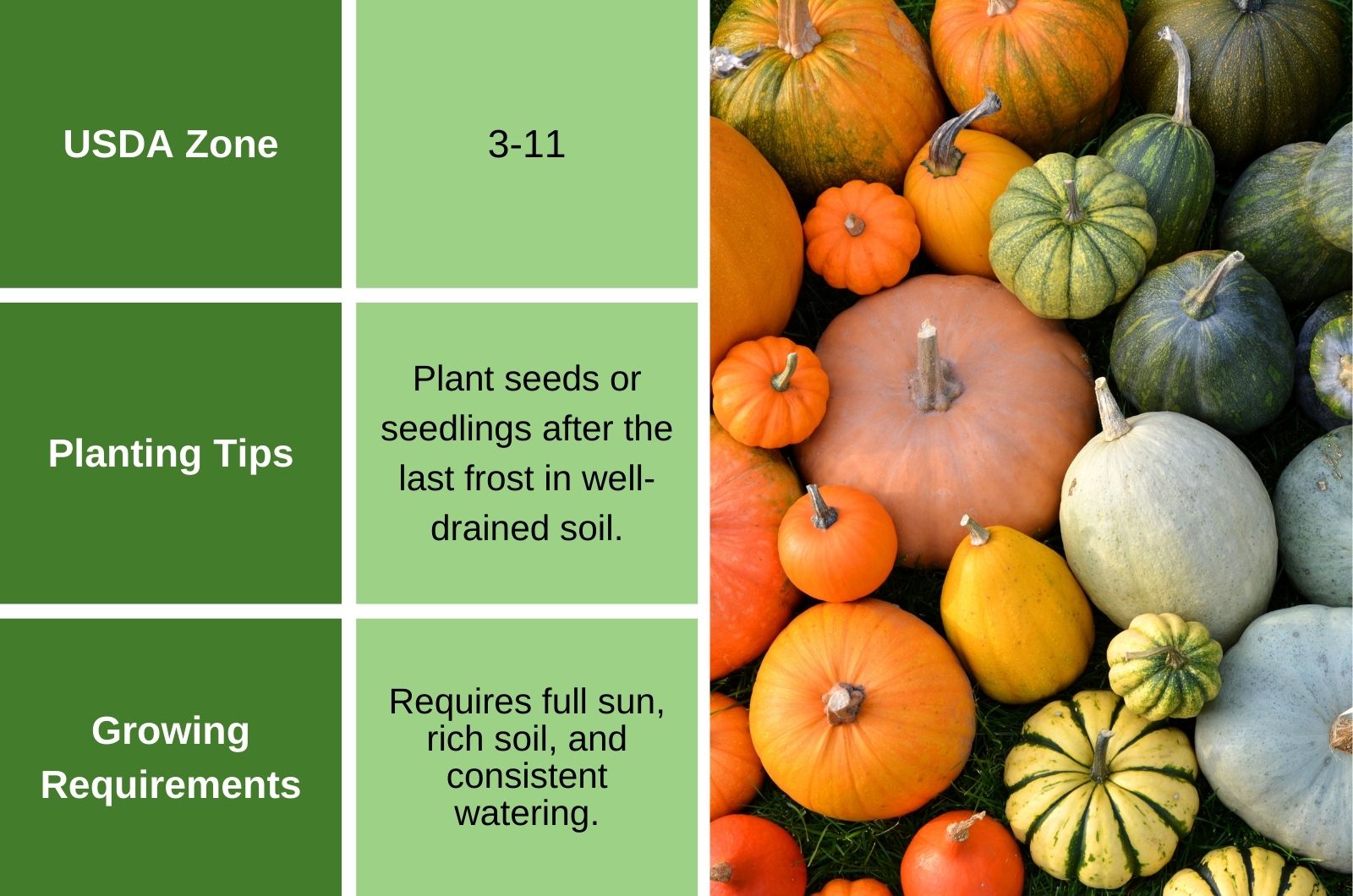Explore easy gardening with ‘Plant and Forget’ veggies!
Most vegetables are quite easy to grow and cultivate, but these ones are the best when it comes to maintenance and thriving in neglected areas.
There’s not much work to be done around them aside from occasional fertilization, weeding, and watering. And at the end, if all goes well, you’ll be rewarded with delicious crops!
So, let’s dive in and discover low-maintenance vegetables that thrive with minimal effort, making gardening a breeze.
1. Garlic
We are starting off with garlic, a root veggie that can take some time to grow and thrive, but you don’t have to put almost any effort into!
Add some organic matter (compost or well-rotted manure will work well) to the soil before planting garlic. Consider planting garlic companion plants nearby.
It is a type of vegetable that thrives in cooler temperatures; plant it four to six weeks before the ground freezes in colder zones. If you live in warmer zones, you can grow it throughout winter until February.
Split the bulb into individual cloves, then plant each one in rows 12 to 18 inches apart, spacing them 2 to 4 inches apart. Make sure to plant each garlic clove one inch deep and cover it with soil.
Water the garlic plants generously and watch them grow and thrive. Garlic will be ready for harvesting when its leaves start to turn brown.
This might be useful: Protect Your Garlic From This Common Pest!
2. Rhubarb
Rhubarb is a type of perennial veggie that cannot be harvested immediately – you should wait until the second or third year for the plants to become established.
Planting divisions or crowns makes growing rhubarb simple. Each plant will require around a square yard of area as the stalks and leaves need some room to spread out.
Even if you put it around the edges of your garden, rhubarb won’t disturb your other plants once it emerges in the spring.
When planting, sow crowns 1 or 2 inches deep – don’t plant them too deeply or they might not come out.
Rhubarb plant care is relatively easy; all you have to do is add some mulch in spring, pick the weeds, and water if the weather gets dry. You can also add rhubarb fertilizer to improve its growth and development.
Harvest it in the spring or summer, when the stalks have grown about 10 inches long. Harvesting should be reduced in late June and early July since the plant needs to store energy for the winter.
3. Beets
Beets are another root veggie that you can plant and forget. Plant them in well-draining soil or you can simply amend your garden soil with organic matter.
These are cool-season veggies that can grow all winter in the Southern states, but in cooler zones, they should be planted after the last frost date.
When planting beets, make sure to sow seeds 1 to 2 inches apart in rows. Cover them lightly with the soil before watering. Expect to see sprouts in a week or two.
Beets can be harvested after two or three months. Smaller beets will have a sweeter flavor, but larger ones have thicker skins so you can store them for a longer time.
This might be useful: 9 Beetroot Growing Mistakes That You Can Avoid
4. Onions
It’s always better to plant onion sets instead of seeds if you decide to grow onions in your garden.
Plant onion sets when the temperature is around 50 degrees Fahrenheit – find a sunny location for your onions and plant them in well-draining, fertile soil.
Onion sets should be planted in rows 10 to 12 inches apart, about 3/4 inch deep, and spaced 2 to 4 inches apart. If you want bigger onions, space them further away from each other.
Then, cover them with soil, allowing the tips of the bulbs to peek through. Compact the soil firmly and give them plenty of water.
Pick weeds and water your onions in periods of drought. Remove any flowers to avoid onion bolting.
These root veggies can be harvested 100 to 120 days after planting – brown tops that fall over are telltale signs that your onions are ready to be harvested.
Also read: Plant Them Together! Onions & Carrots Are The Perfect Couple
5. Winter Squash
Winter squash is a flavorsome vegetable that is not so difficult to cultivate, but it will require some space to grow and spread its vines.
There are a lot of varieties to choose from – you can opt for spaghetti squash if you like noodles, or a typical butternut squash.
Plant your squash as soon as the frost is over and they will be ready for harvesting in the fall and winter.
Plant seeds directly into the ground in mounds or hills of rich, well-drained soil. Thin seedlings to three plants per hill, three feet apart, after they are approximately 2 inches tall.
Simply let the plants creep up on their mounds and take them over. To prevent the fruits from discoloring on the ground, place straw mulch underneath them and water them during dry spells for optimal results.
6. Potatoes
And we are finishing off our list with good old potatoes!
Late winter or early spring is the best time to plant early season potatoes. They generally take three months to grow and reach maturity. You can also grow potatoes in grow bags or containers if you don’t have enough garden space.
Mid-season potatoes are usually larger, take 4 to 5 months to mature, and should be planted in the spring.
Even though you have to wait some time for potatoes to grow and mature, these are highly undemanding plants that can grow in different soil types and mild temperatures.
For successful potato planting, use seed potatoes instead of grocery store ones to avoid potential issues. Plant them 5-6 inches deep initially, ensuring protection from the sun without additional care.
Enrich the soil with fertilizer at planting, and again when plants are 8-12 inches tall. Harvest when plants wilt and avoid keeping them in the ground too long.
Also read: Does Chitting Your Potatoes Before Planting Lead To A Richer Yield?







